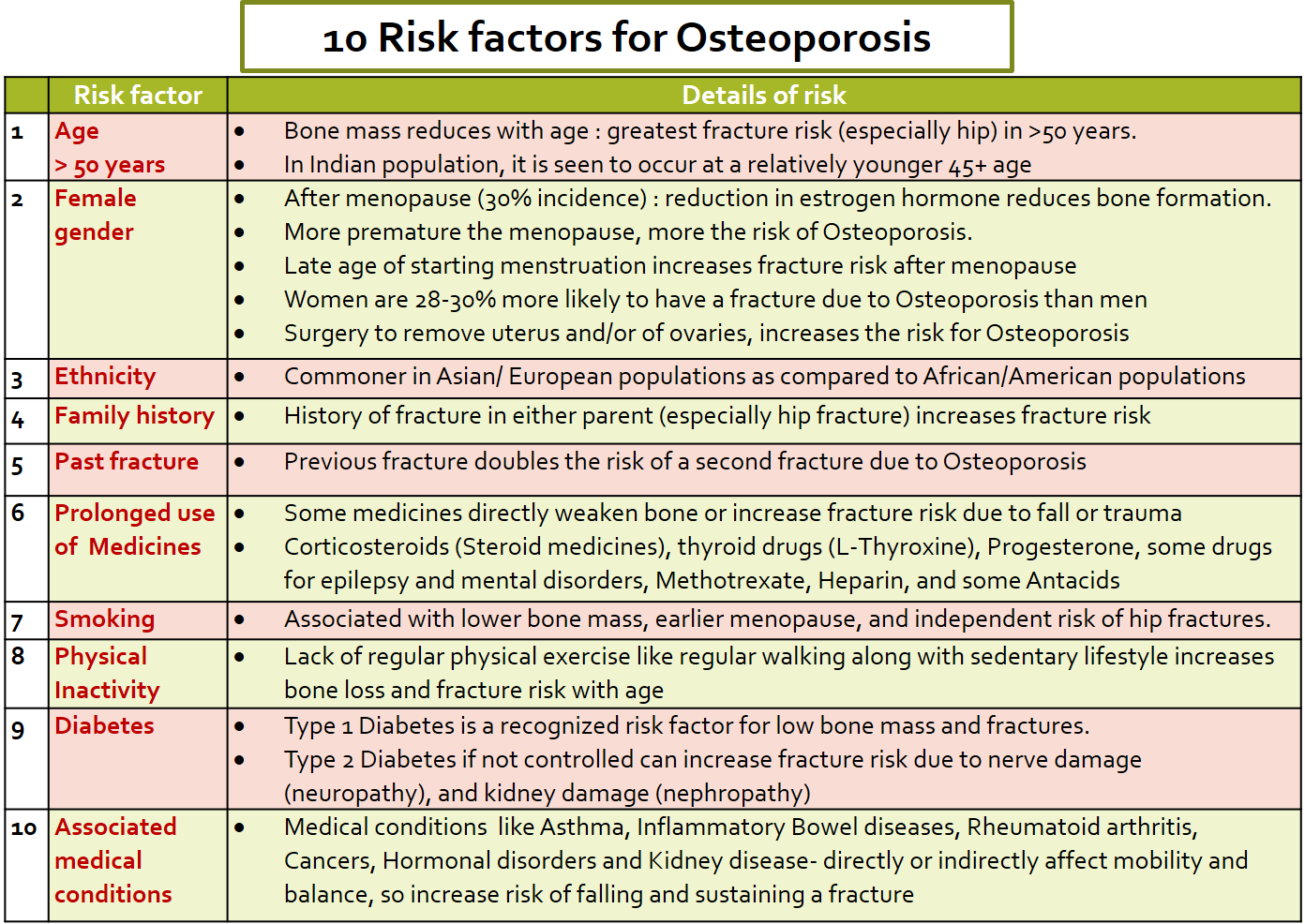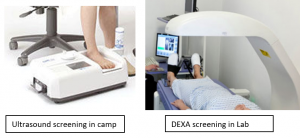Quick Read – Tips to Prevent Weak Bones
WHAT IS OSTEOPOROSIS AND OSTEOPENIA
Osteoporosis is a disease characterized by thinning of bones and increased fragility – what we call a loss of bone mass or reduction in bone mineral density (BMD). This usually starts and continues silently for many years, and the first manifestation of this condition is usually a fracture often after an injury, event, or trauma which may otherwise be considered quite trivial or unimpactful. The usual sites of such fractures are the hip, spine, wrist, and shoulder.
Osteopenia refers to a lower bone mineral density (BMD) or bone mass, as compared to normal but not low enough to significantly increase fracture risk and be considered as osteoporosis. However, osteopenia can develop into osteoporosis sooner or later.
Over 200 million people worldwide and more than 50 million people in India suffer from osteoporosis or osteopenia.
Quick read – Tips to prevent weak bones
WHAT CAUSES OSTEOPOROSIS AND WHO IS AT RISK
Unfortunately, no single cause or definite prevention has yet been identified, therefore the logical way to go will be to know who all are at higher risk than the general population and screen them for their bone mineral density (BMD).
Increasing age and menopause in women are the most established risk factors. Others include family or past personal history of fractures, physical inactivity, and associated medical conditions like diabetes, smoking, inflammatory disorders of the bowel (IBD), arthritis, asthma, certain cancers, hyperparathyroidism, and other hormonal disorders.
Long-term intake of certain medicines can also increase the risk of bone loss like corticosteroids, PPI-antacids, selective serotonin reuptake inhibitors (SSRIs) antidepressants, antiepileptic drugs, hormonal treatment suppressing estrogen in women (aromatase inhibitors,gonadotropin-releasing hormone antagonists, medroxyprogesterone), blood thinners like heparin or warfarin, immunomodulators like methotrexate, cyclosporine, and anticancer drugs. Exposure to the metals aluminum and cadmium (industry waste, soil/water near factories, etc.), can also prevent calcium absorption and incorporation into bone, and lead to osteopenia.
Screening for osteoporosis is most important in people having a combination of the risk factors below –



HOW TO GET SCREENED FOR OSTEOPOROSIS?
The only way to know that one has osteoporosis is either by routine screening or after a fracture occurs. The thin and fragile bones in osteoporosis can lead to relatively minor injuries/trauma causing fractures. Most concerning are the fractures of the hip and spine. Therefore screening and timely intervention are advised especially when the mentioned risk factors are present.
DXA, sometimes known as DEXA (dual-energy X-ray absorptiometry) is the most standard, well-recognized, and reliable test for screening and diagnosis of osteoporosis, as well as monitoring improvement with treatment. DEXA is an X-ray-based test available in all standard labs. It gives the Bone Mineral Density (BMD) measurement result as a ‘T score’ (normal T score is ≥ -1.0, low bone mass or osteopenia is between -1.0 and -2.5, and osteoporosis is ≤ -2.5). In India, the DEXA test costs between 1500 -2500 INR, depending on how many body sites are being screened.
Ultrasound is another screening test used often in ‘BMD camps’ which are conducted as free osteoporosis screening camps at clinics or health centers. Here checking is done by a small, portable, easy to carry quantitative ultrasound (QUS) machine in which one places the foot. This is useful as a quick screening test as it is always done free of charge, but the T score standardized cut-offs of DEXA do not apply here and each of these ultrasound machines has its own calibrations and cut-off values. One cannot use these camp machines for checking improvement in BMD with treatment, and these machines can miss early disease as they use only the foot to check for bone thinning, where the reduction in bone mass may occur later than the hip or spine which DEXA checks. So, it is always best to confirm the diagnosis with DEXA and also use it for follow-up checks.



ONCE DIAGNOSED, WHAT IS THE TREATMENT
If one gets diagnosed in time before a fracture becomes the reason for the diagnosis…that is indeed fortunate!
The doctor will start a calcium supplement with vitamin D and other vitamins/minerals (a guide to the different types of calcium/ vitamin D supplements is available). Active vitamin D (calcitriol) may be given with monitoring instead of vitamin D in patients who have compromised kidney function. An analog of the active form of vitamin D called eldecalcitol is also approved for osteoporosis in China and Japan. Another analog called alfacalcidol is available in Europe, Canada, India, China, and Japan, and also available in combination with calcium and other vitamins/minerals.
However, in patients who have low bone mass, severe osteoporosis, a history of a fracture, or high fracture risk, other drugs that are expensive but stronger and effective may be added. These may include injections like bisphosphonates (pills like alendronate, risedronate, monthly ibandronate, and IV injections zoledronate, pamidronate, and quarterly ibandronate), teriparatide (synthetic parathyroid hormone PTH analog injection), biological injections (denosumab, romosozumab) or/and calcitonin (as nasal spray). In some women, hormone therapy with estrogen may also be considered.
Apart from medicines, one is also advised diet and lifestyle modification with regular walking or other appropriate exercises/sports, and care to be taken against trauma, accidents, or injuries.
Further Reading-
Arthritis – Awareness of the Causes, Types and Health Impact
Acute Injuries: Bruise, Hematoma, Sprain-Strains, Fracture and Dislocation
For any query, additional information or to discuss any case, write to info@drvarsha.com, and be assured of a response soon.
References
Osteoporosis screening US Preventive Services Task Force 2018
International Osteoporosis Foundation Risk Check
Screening for Osteoporosis – Making an Informed Choice of DXA or Calcaneal QUS: ARC Journal of Orthopedics, Volume-4 Issue-1, 2019, Page No: 9-13


